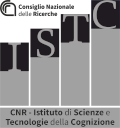A newly designed technique for experimental
single-photon emission tomography (SPET) and positron
emission tomography (PET) data acquisition with minor
disturbing effects from scatter and attenuation has been
developed. In principle, the method is based on discrete
sampling of the radioactivity distribution in 3D objects
by means of equidistant 2D planes. The starting point is
a set of digitised 2D sections representing the radioactiv-
ity distribution of the 3D object. Having a radioactivity-
related grey scale, the 2D images are printed on paper
sheets using radioactive ink. The radioactive sheets can
be shaped to the outline of the object and stacked into a
3D structure with air or some arbitrary dense material in
between. For this work, equidistantly spaced transverse
images of a uniform cylindrical phantom and of the digi-
tised Hoffman rCBF phantom were selected and printed
out on paper sheets. The uniform radioactivity sheets
were imaged on the surface of a low-energy ultra-high-
resolution collimator (4 mm full-width at half-maxi-
mum) of a three-headed SPET camera. The reproducibil-
ity was 0.7% and the uniformity was 1.2%. Each rCBF
sheet, containing between 8.3 and 80 MBq of 99m TcO
4
-
depending on size, was first imaged on the collimator
and then stacked into a 3D structure with constant 12 mm
air spacing between the slices. SPET was performed
with the sheets perpendicular to the central axis of the
camera. The total weight of the stacked rCBF phantom
in air was 63 g, giving a scatter contribution comparable
to that of a point source in air. The overall attenuation
losses were <20%. A second SPET study was performed
with 12-mm polystyrene plates in between the radioac-
tive sheets. With polystyrene plates, the total phantom
weight was 2300 g, giving a scatter and attenuation mag-
nitude similar to that of a patient study. With the pro-
posed technique, it is possible to obtain "ideal" experimental images (essentially built up by primary photons)
for comparison with "real" images degraded by photon
scattering and attenuation losses. The method can serve
as a tool for experimental validation and intercomparison
of attenuation and scatter correction methods. Moreover,
the large flexibility of this phantom design will allow in-
vestigations of arbitrary activity distributions and autora-
diography or other imaging techniques such as PET, x-ray
computed tomography or magnetic resonance imaging.
A novel phantom design for emission tomography enabling scatter- and attenuation-"free" single photon emission tomography imaging
Tipo Pubblicazione:
Articolo
Publisher:
Springer., Berlin;, Germania
Source:
European journal of nuclear medicine 27 (2000): 131–139.
info:cnr-pdr/source/autori:Larsson SA, Jonsson C, Pagani M, Johansson L and Jacobsson H/titolo:A novel phantom design for emission tomography enabling scatter- and attenuation-"free" single photon emission tomography imaging/doi:/rivista:European journal
Date:
2000
Resource Identifier:
http://www.cnr.it/prodotto/i/220099
Language:
Eng


